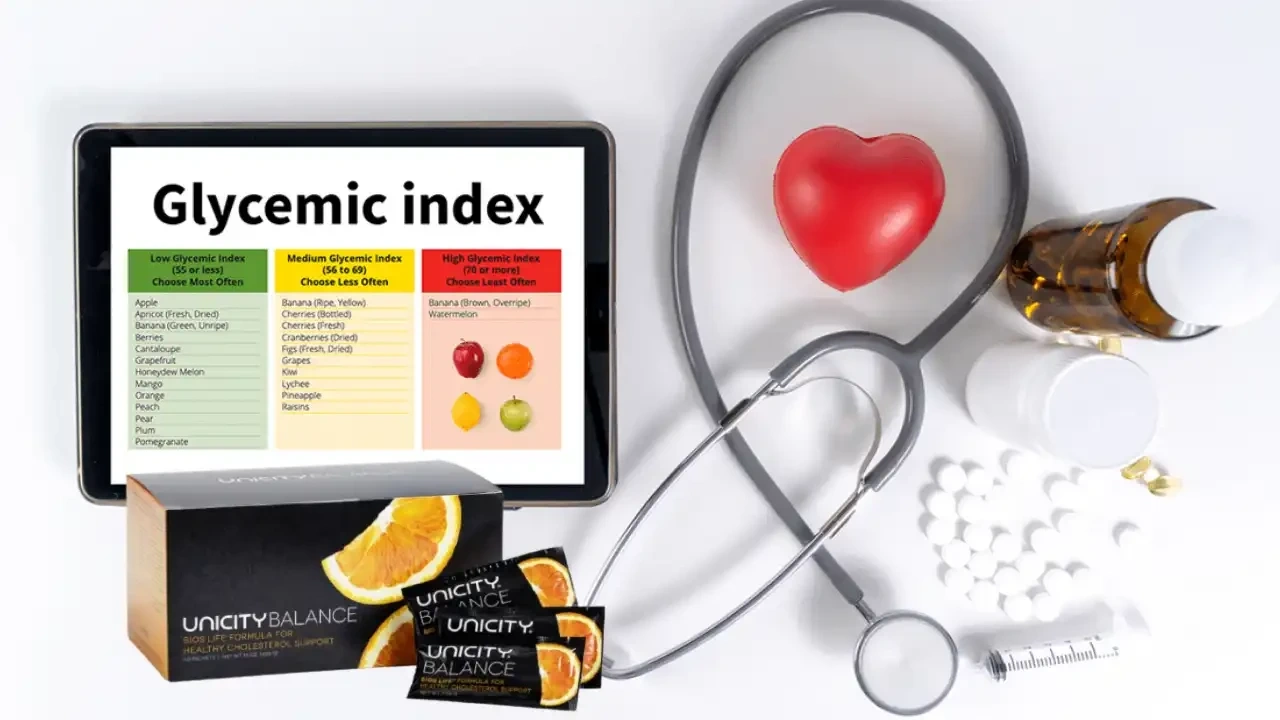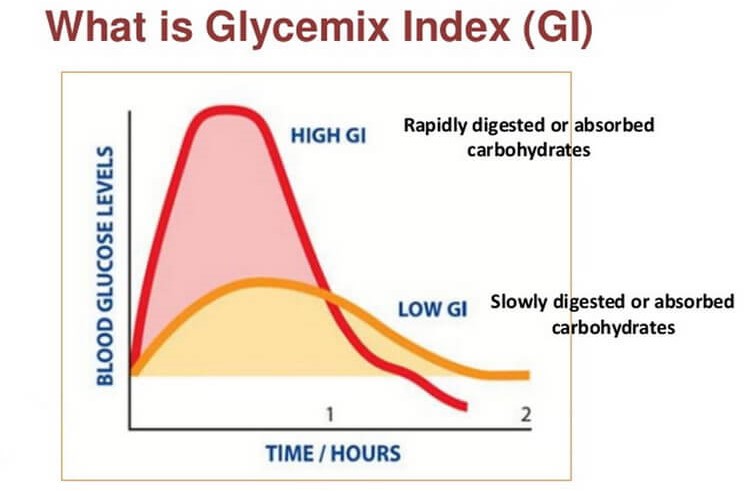Why The Glycemic Index & The Feel Great System Can Help You Get Healthy
Nov 04, 2021
You know that there are carbohydrates that are good for you and carbohydrates that aren’t. But how do you tell the difference? Is there a measurement you can use to choose which carbohydrates are best to eat?
There is! It’s called the Glycemic Index. This index assigns a number to the carbohydrates you eat every day. Generally speaking, the lower the number, the better the food is for you.
The Glycemic Index (GI) gives you a new way to look at carbohydrates. When you use this as a guide to take a closer look at the foods you eat, you’ll learn more about how each bite impacts your blood sugar. GI is a powerful way to look at food, and when you use it the right way it can make it much easier to reach your goals.
Why the Glycemic Index Matters
When you use the GI to make decisions about food, you’ll…
- Choose foods that keep you fuller, so you’ll eat fewer calories and lose more weight.
- Avoid foods that have a high impact on your blood sugar, so you’ll have a lower risk of diabetes and start using stored fat for energy.
- Make more conscientious choices about which foods you include in your diet.
When you don’t use the GI to help you choose carbs, you’ll…
- Run the risk of eating low-quality carbs
- Eat more calories because the carbs you eat don’t keep you full, leading to weight gain
- Have a higher risk of diabetes, especially if you tend to choose low quality carbohydrates
The Science Behind the Glycemic Index
The Glycemic Index assigns a number to a food based on how quickly it makes your blood sugar rise. Low GI foods (those with a score of 55 or lower) are digested very slowly and cause fewer spikes in blood sugar. High GI foods (those with a score of 70 or higher) are digested quickly and can cause blood sugar spikes. Foods with a score of 56 to 69 are somewhere in the middle.

For example, most sugary cereals have a score of around 75. If you ate a bowl of that for breakfast, your body would digest it very quickly. The amount of sugar in your blood would spike, and your body would release insulin quickly to help store it away. In the short term, this blood sugar spike would give you a burst of energy, but you’d lose it quickly. Because it didn’t take long for your body to digest what you just ate, you’d be hungry again quickly. And if you kept eating foods with a high quantity of sugar, over a period of time your body may become resistant to insulin, putting you at risk for type 2 diabetes.
But what if you were to choose a meal with a lower GI number? Let’s say you had a bowl of oatmeal for breakfast. Oatmeal has a GI of 55, which is much lower than sugar’s 100. This means that your body will digest the oatmeal much less quickly than it would sugar. You would stay full for longer, and your blood sugar would not rise so quickly.
By choosing low GI foods, you put yourself in a great position to eat fewer calories, lower your risk of diabetes, and improve your overall health. But that’s not the only benefit. Studies conducted by the School of Molecular Bioscience Human Nutrition Unit at Sydney University have found that eating fiber before eating high glycemic foods can help reduce their glycemic index.
Unicity Balance, an advanced fiber supplement, is clinically proven to do just that. Its patented formula creates a soft gel solution that coats your stomach and reduces the speed at which your body breaks down your food. Sugar enters your bloodstream at a more controlled rate, which means fewer spikes in insulin.
The Challenge
So what does all this tell us? By choosing low GI foods and supplementing with Unicity Balance, you can make a huge change in how your body processes carbohydrates. When you start using the Glycemic Index to guide your food choices, you’ll better control your blood sugar and diabetes, feel fuller, and move towards your weight loss goals more quickly.
So are you ready to give it a try?
Make a Change: For the next 21 days, check the Glycemic Index for all the foods you eat. Limit your high GI foods (with a score of 70 or higher) to two servings a week. Take Unicity Balance before each of your two main meals to help further control your body’s response to sugar.
Challenge Yourself: For the next 21 days, use the below downloadable Food Guide check the Glycemic Index for all the foods you eat. Eliminate all high GI foods from your diet. Use Unicity Balance before every meal to help further control your body’s response to sugar. The Glycemic Index and Unicity Balance will transform how you look at carbohydrates. Give them a try for 21 days and you’ll notice a difference in how you look and feel.
Are you ready to make a commitment to improving your health, choosing healthier foods, and lowering your risk of (or better controlling) diabetes? Are you ready to commit to using the Glycemic Index and Unicity Balance to improve your diet and better manage your blood sugar? Your Next Steps
Your Next Steps
- Start with The Feel Great System, and consistently drink Unicity Balance before you eat. 10-15 minutes before a meal, mix a packet of Unicity Balance with 8-10 ounces of cold water. Your body will thank you!
- Check the the Glycemic Index for the carbs you eat. Use the Food Guide below to choose foods that have a low GI. These foods will keep you full, give you more fiber, and cause fewer blood sugar spikes.
- Watch your portions. A food’s GI is determined based on a specific serving size. Eating more than that amount can result in a larger spike in blood sugar. Portion control is also a vital way to meet your calorie goals and keep losing weight.
- Think about nutritional value. The Glycemic Index is a valuable tool, but it shouldn’t be the only way you choose foods. For example, potato chips have a GI of 56, while oatmeal has a GI of 55. While those numbers are very similar, oatmeal has much more nutritional value.
Think Long Term
The Glycemic Index and Unicity Balance will be just as useful in the next 21 days and long term.
- Keep a Food Guide nearby. Keep a digital copy on your phone or computer, or print out a hard copy to keep on hand. Whenever you come across a new food, check its GI to learn more about how it might impact your body.
- Recruit family and friends. Let others know about the benefits of the GI and Unicity Balance. Motivate each other to make great low GI food choices.
- Talk your doctor or take a blood test. Many people who try Unicity Balance find that over time, their ability to regulate their blood sugar becomes better and better. Some have even been able to reduce their dependence on insulin, or go without altogether. Stay in touch with your doctor as you make these changes to see how they’re impacting your body.
- Balance low and high glycemic foods. You don’t have to go the rest of your life without ever eating another high glycemic food again. There are many nutritious foods, including rice, raisins, and sweet potatoes, that have a high GI. Similarly, there are many unhealthy foods that have a low GI (Peanut M&Ms have a GI of 33!). Find a balance between the types of carbs you eat and make the most of Unicity Balance to enjoy a delicious, nutritious, and healthy diet.
Feel Better Than You Have In Years!



